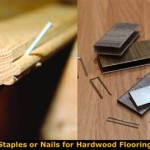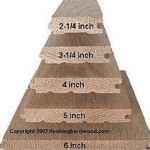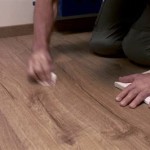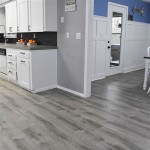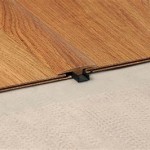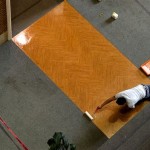All Wood Flooring: A Comprehensive Guide
All wood flooring, often referred to as solid wood flooring, represents a timeless and highly desirable flooring option for residential and commercial spaces. Its enduring appeal stems from its natural beauty, durability, and potential for adding significant value to a property. This article delves into the various aspects of all wood flooring, exploring its types, advantages, disadvantages, installation methods, maintenance requirements, and considerations for making informed decisions about its suitability for specific applications.
Types of All Wood Flooring
The term "all wood flooring" encompasses various wood species, each possessing unique characteristics influencing its appearance, hardness, and cost. The most common types include:
Oak: Oak is a prevalent choice due to its durability, availability, and relatively moderate cost. It exhibits a distinctive grain pattern and accepts stains well, allowing for a wide range of aesthetic expressions. Two main types of oak are red oak and white oak. Red oak features a warmer tone and more open grain, while white oak is denser, more water-resistant, and possesses a cooler, more neutral tone. Both are suitable for high-traffic areas.
Maple: Maple is known for its smooth, fine grain and light color. It is a very hard and durable wood, making it resistant to dents and scratches. Its uniform appearance lends itself well to contemporary designs. However, maple can be more challenging to stain evenly compared to oak, often requiring a sealant to prevent blotching.
Hickory: Hickory is one of the hardest domestic hardwoods, known for its exceptional durability and resistance to wear and tear. It displays a prominent grain pattern and exhibits a wide range of color variations, from light brown to reddish-brown. Hickory is often chosen for its rustic and character-rich appearance, making it suitable for spaces where a natural, rugged aesthetic is desired.
Cherry: Cherry is a beautiful, reddish-brown hardwood that darkens with age, developing a rich patina. It is softer than oak or maple and more susceptible to dents and scratches. Cherry is often used in more formal settings and is prized for its elegant appearance. Its color variations and natural beauty make it a sophisticated choice.
Walnut: Walnut is a dark, luxurious hardwood with a rich brown color and distinctive grain patterns. It is softer than oak or maple, requiring careful consideration for high-traffic areas. Walnut is a premium wood flooring option that adds a touch of elegance and sophistication to any space. Its deep, warm tones create a sense of richness and depth.
Beyond these common species, a diverse range of exotic hardwoods, such as Brazilian Cherry (Jatoba), Tigerwood, and Ipe, are also available. These exotic options often feature unique colors, grain patterns, and exceptional hardness, adding a distinctive and luxurious element to a space. However, they typically come with a higher price tag and may have specific installation and maintenance requirements.
Advantages of All Wood Flooring
All wood flooring offers several compelling advantages that contribute to its enduring popularity:
Aesthetics: The natural beauty of wood is undeniable. Each plank possesses unique grain patterns and color variations, creating a warm, inviting, and aesthetically pleasing environment. All wood flooring can enhance the visual appeal of any room, adding a touch of elegance and sophistication.
Durability: When properly installed and maintained, all wood flooring can last for generations. Its inherent durability makes it a suitable choice for high-traffic areas, providing a long-lasting and cost-effective flooring solution. With periodic refinishing, it can maintain its beauty and structural integrity for many years.
Value: All wood flooring is considered a premium flooring option that can significantly increase the value of a property. Its timeless appeal and enduring quality make it an attractive feature for potential buyers, enhancing the overall marketability and desirability of a home or commercial space.
Refinishing: Unlike many other flooring materials, all wood flooring can be refinished multiple times. This allows for the removal of scratches, dents, and other surface imperfections, restoring the floor to its original beauty. Refinishing also provides the opportunity to change the color or finish of the floor, adapting it to evolving design preferences.
Sustainability: Wood is a renewable resource, making all wood flooring a more sustainable option compared to synthetic flooring materials. Responsible forestry practices ensure the long-term availability of wood resources, minimizing the environmental impact of its production and use. Look for certifications like the Forest Stewardship Council (FSC) to ensure sustainable sourcing.
Improved Air Quality: All wood flooring does not trap dust, pollen, or other allergens as easily as carpets. This can contribute to improved indoor air quality, making it a healthier choice for individuals with allergies or respiratory sensitivities. Regular cleaning and maintenance can further minimize the presence of allergens in the environment.
Disadvantages of All Wood Flooring
Despite its many advantages, all wood flooring also presents certain drawbacks that should be considered:
Cost: All wood flooring is generally more expensive than other flooring options, such as laminate or vinyl. The cost of materials, installation, and finishing can represent a significant investment. However, its long-term durability and potential to increase property value can offset the initial expense over time.
Maintenance: All wood flooring requires regular maintenance to preserve its appearance and prevent damage. This includes sweeping, vacuuming, and occasionally damp-mopping. Regular application of appropriate wood floor cleaners is also necessary to prevent dullness and buildup. It is crucial to use products specifically designed for wood floors to avoid damage.
Susceptibility to Moisture: All wood flooring is susceptible to damage from moisture, including spills, leaks, and high humidity. Excessive moisture can cause warping, cupping, or buckling of the planks. It is essential to address spills promptly and maintain a consistent indoor humidity level to prevent moisture-related problems. It is generally not recommended for installation in bathrooms or basements with high moisture levels.
Scratching and Denting: While durable, all wood flooring is still susceptible to scratches and dents from furniture, pet claws, and dropped objects. Using furniture pads under legs and trimming pet nails can help minimize the risk of damage. Choosing a harder wood species, such as hickory or maple, can also provide greater resistance to scratches and dents.
Noise: All wood flooring can be noisier than carpet or resilient flooring, particularly in multi-story buildings. The sound of footsteps or dropped objects can transmit through the floor. Installing a sound-dampening underlayment can help reduce noise transmission and improve acoustic comfort.
Installation of All Wood Flooring
Proper installation is crucial for the long-term performance and appearance of all wood flooring. The installation method depends on the type of subfloor, the width and thickness of the planks, and the desired aesthetic. Common installation methods include:
Nail-Down: This traditional method involves nailing the planks directly to a wood subfloor. It is suitable for solid wood flooring that is at least ¾ inch thick. The nail-down method provides a secure and durable installation, allowing for minimal movement of the planks.
Glue-Down: This method involves adhering the planks to the subfloor using a specialized wood floor adhesive. It is suitable for both solid and engineered wood flooring. The glue-down method provides a stable and quiet installation, minimizing movement and noise transmission.
Floating: This method involves installing the planks over an underlayment without attaching them directly to the subfloor. The planks are typically connected using a tongue-and-groove system. Floating installations are generally quicker and easier than nail-down or glue-down installations, making them a popular choice for DIY projects.
Acclimation is a critical step in the installation process. Wood flooring needs to acclimate to the ambient temperature and humidity of the installation environment for several days before installation. This allows the wood to expand or contract to its equilibrium moisture content, minimizing the risk of warping or gapping after installation.
Professional installation is highly recommended to ensure proper techniques are used and potential problems are avoided. A skilled installer can properly prepare the subfloor, install the flooring according to manufacturer specifications, and address any challenges that may arise during the process.
In summary, all wood flooring remains a highly sought-after flooring option, offering a blend of natural beauty, durability, and value. Careful consideration of wood species, installation methods, and maintenance requirements is essential for making informed decisions and ensuring the long-term satisfaction with this timeless flooring choice.

Details Allwood

Difference Between Engineered Solid Wood Flooring Floorrich Sg

How Hard Can It Be To Choose A Hardwood Floor The New York Times

Solid Wood Flooring All You Need To Know

Engineered Hardwood Vs Laminate Flooring In Portland

Allwood Flooring Commercial Maintenance Program Guide To Maximize Life Of Wood In S

What S Hot In Hardwood Features Floor Covering Weekly

Mikasa Wooden Flooring Company Buy Real Floors And Planks

Solid Wood Flooring Finishes Advice Flooringsupplies Co

Wood Floors For All Tastes Orange County Register
Related Posts

